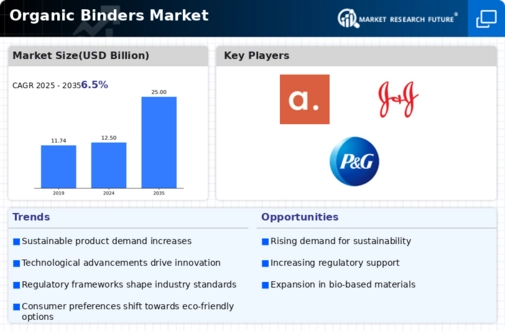Market Trends
Key Emerging Trends in the Organic Binders Market
The Subsea Organic Binders Market is currently witnessing significant trends that are reshaping the industry across various applications in offshore oil and gas exploration. One noteworthy trend is the increasing adoption of subsea organic binders in the oil and gas industry for enhancing the stability of subsea soil and preventing sediment erosion. As offshore exploration and production activities move into deeper and more challenging waters, the demand for effective soil stabilization solutions has grown. Subsea organic binders, such as biopolymers and natural fibers, are gaining popularity due to their environmentally friendly properties and ability to mitigate soil instability issues in subsea environments.
Environmental sustainability is a key driver influencing market trends in the Subsea Organic Binders Market. With growing concerns about the environmental impact of offshore drilling activities, there is a heightened focus on utilizing organic and biodegradable binders in subsea applications. Manufacturers are investing in the development of binders derived from renewable sources that minimize ecological disruption and reduce the carbon footprint of subsea operations. This trend aligns with the industry's commitment to responsible and sustainable practices in subsea exploration.
Technological advancements play a pivotal role in shaping market trends in the Subsea Organic Binders Market. Ongoing research and development efforts focus on improving the performance and applicability of organic binders in subsea environments. Innovations in binder formulations, application methods, and compatibility with various subsea soil types contribute to the development of more effective and versatile solutions. These technological trends address the industry's need for organic binders that provide reliable and long-lasting stabilization in challenging subsea conditions.
The oil and gas industry's focus on cost efficiency is another significant influencer of market trends in the Subsea Organic Binders Market. As companies seek cost-effective solutions for subsea soil stabilization, organic binders present an attractive alternative due to their potentially lower costs compared to traditional stabilization methods. This trend is driven by the industry's ongoing efforts to optimize operational expenses and enhance the economic viability of subsea projects, especially in the current market environment with fluctuating oil prices.
Supply chain dynamics and raw material costs are critical factors impacting market trends in the Subsea Organic Binders Market. The availability and pricing of raw materials, such as biopolymers and natural fibers, can influence the overall cost of organic binders. Fluctuations in raw material prices, geopolitical factors affecting the supply chain, and global economic conditions can pose challenges for manufacturers. Companies in the Subsea Organic Binders Market are actively managing their supply chains, exploring alternative raw materials, and adopting strategies to ensure a stable and cost-effective production process.
Moreover, there is a growing trend towards collaborative research and industry partnerships to advance the development and application of subsea organic binders. With the complexity of subsea environments and the need for tailored solutions, industry players are increasingly collaborating with research institutions, technology developers, and other stakeholders to collectively address the challenges associated with soil stabilization. This trend reflects the industry's recognition of the interdisciplinary nature of subsea exploration and the value of collaborative efforts in driving innovation.






Leave a Comment